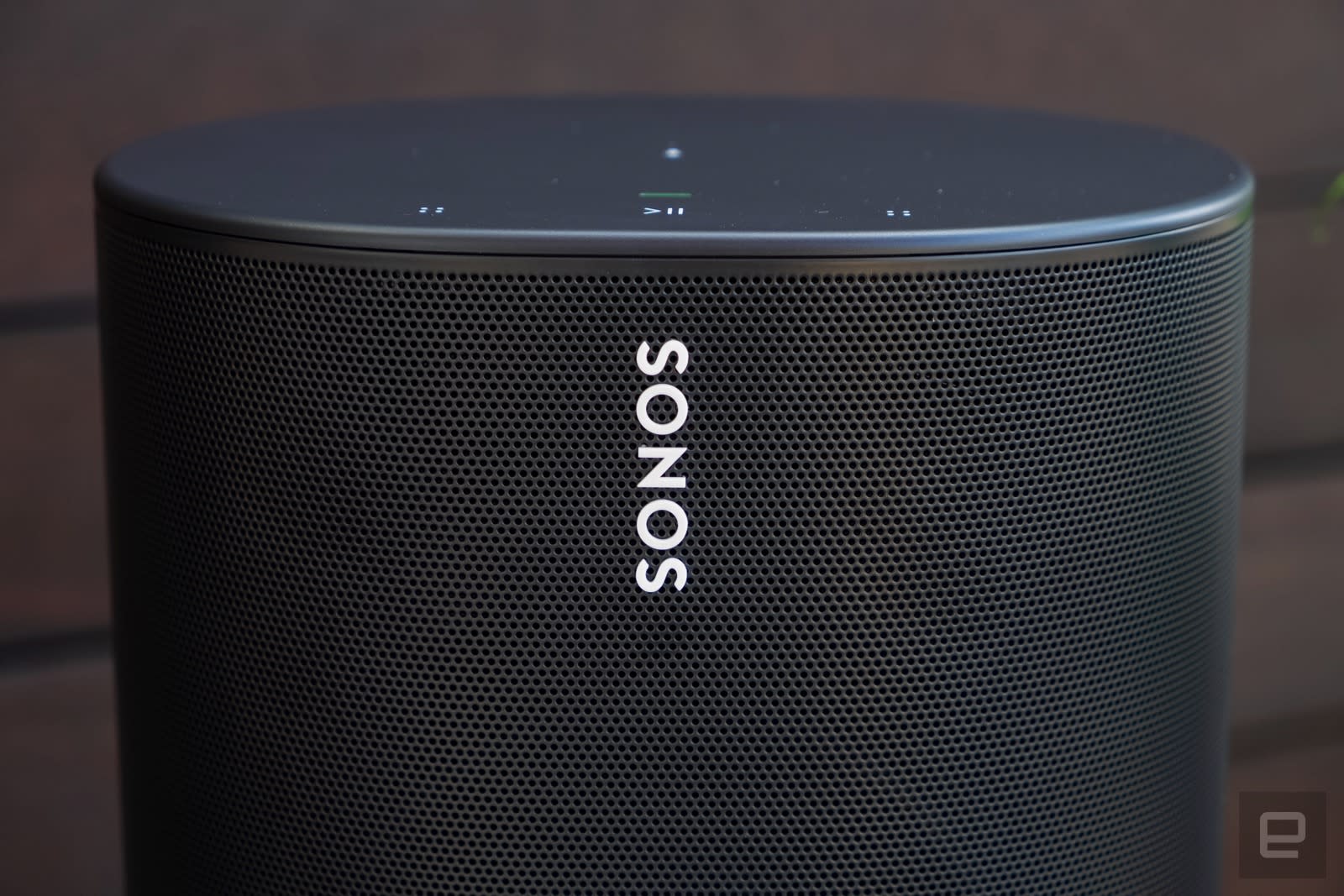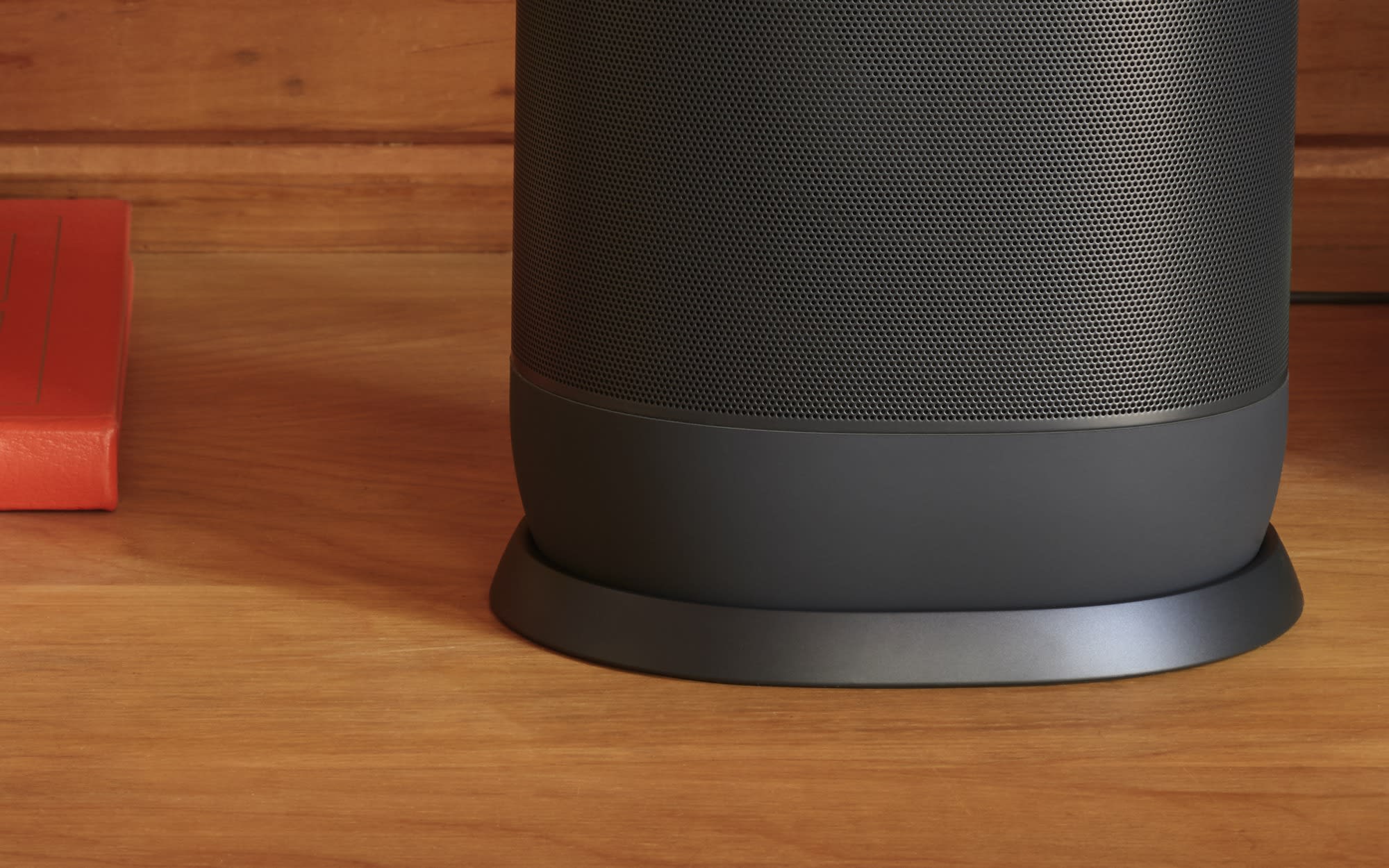Just another Sonos, at first
At first glance, the Move seems like any other Sonos speaker. It’s a tall, dark gray oval with a flat touch-sensitive top, like a bigger Sonos One. It has all the features you’d expect from a modern speaker, including support for Alexa, Google Assistant and AirPlay 2. You can stream music to it from dozens of audio services using the catch-all Sonos app. And if you have multiple Sonos speakers in your home, the Move can be grouped with those for multi-room music playback.
But as the name implies, the Move is meant to be… moved. Pick it up from the included charging ring and the battery should provide about 10 hours of playback (we’ll have to test that claim, of course). And while Sonos says that the Move has the strongest WiFi of any product it has built, the company built this speaker to go outside the home, beyond your WiFi signal. For those occasions, yes, you can switch over to Bluetooth by pressing a button on the speaker’s back. From there, it’ll just work like any other Bluetooth speaker.
The Bluetooth switch on the back is tucked away underneath a nicely-integrated handle, alongside the traditional Sonos sync button for setup and — for the first time — a power button. When the Move is plugged in (either in its charging cradle or through USB-C, another first), you don’t need the power button for anything. But Sonos designed the Move to last much longer in sleep mode than its 10 hours of playback time. So if the speaker isn’t being used, it goes to sleep and can last multiple days away from a charger. To wake it up, just tap the power button or use the Sonos app to start playing music.
Outdoor engineering
As the first speaker Sonos has ever built to be used outside, the Move presented some new engineering challenges. The company set a goal to make the Move work in basically any environment you can throw at it, and at first glance that lofty goal seems to have been met. The Move is rated IP56, which means it’s both dust- and water-resistant. Although the Move can’t be submerged in water (not that anyone would really want to do that), it’ll survive being left out in rain or snow. And the dust-resistance rating means the Move should easily survive being tossed in the sand at the beach.
During a session with press, Sonos showed off the Move’s strength with some elaborate demonstrations. One station whipped up a small sandstorm around the speaker, while another sprayed it with water from every direction. The Move was dropped from about three feet repeatedly, and Sonos said it could be dropped from shoulder height without an issue. The company designed a new color finish that isn’t terribly dramatic but is meant to be more resistant to UV light than the traditional black and white finishes that usually show up on its speakers. Sonos also exposed the Move to dozens of spills from substances like oil, wine, bleach, mustard and much more — nothing impacted its performance, and everything was cleaned off with water without issue. And the speaker is rated to work in a frankly absurd range of temperatures, all the way down to 14 degrees F and up to 131 degrees F (-10 to 55 Celsius).
It goes without saying that most people are not going to use the Move in the rain or snow or in below-freezing temperatures. But this protection is here so that people can push the boundaries of what they might do with a consumer electronics gadget and not be let down: Go ahead and forget the speaker outside after a night hanging out using it, it won’t be ruined by the elements. It’s about thinking through all the various scenarios that come with a portable, outdoor-focused speaker and making sure it’s covered in any reasonable scenario someone might experience. Forgetting a speaker outside in the rain certainly seems like a plausible one. Of course, just as with battery life, we’ll need to test the Move ourselves and see how it holds up, but all indications show Sonos going far beyond what the average person will subject the speaker to.





